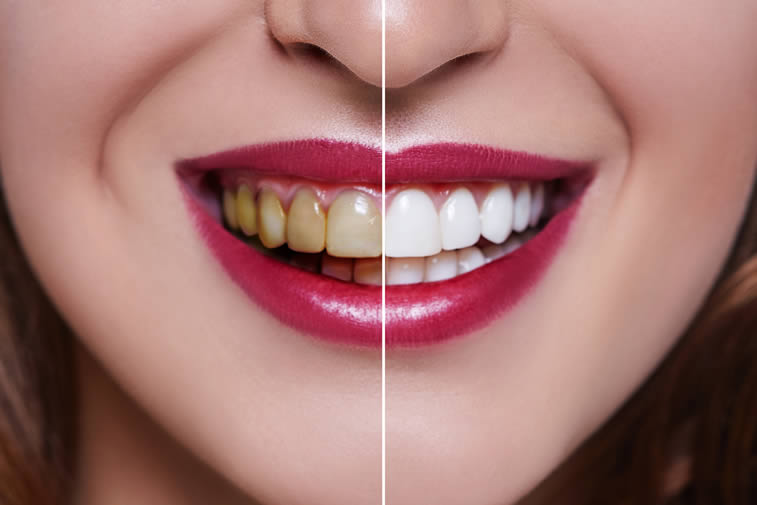Bridges
A dental bridge replaces the missing teeth with artificial teeth called “pontics,” and is supported on the ends by prepared natural teeth. Once fabricated and fitted a dental bridge will be permanently “fixed,” or cemented into place. Like crowns, bridges can be made of either porcelain baked on to a metal substrate or many of the new ceramic materials that have been developed.

Cosmetic Dentistry
Cosmetic dental procedures can range from treatments that are relatively quick and non-invasive to more comprehensive plans of care to restore incomplete smiles that have been affected by severely damaged, lost, or missing teeth.

Crowns & Caps
In addition to restoring a single natural tooth, crowns can be used in other situations including being the supporting ends of dental bridge, covering dental implants, or as coverage for a cracked tooth to prevent further breakdown. A crown may also be indicated when a discolored or stained tooth needs to be restored to its natural appearance. Crowns can be made of either porcelain baked onto a metal substrate, all-porcelain, or many of the new ceramic materials that have been developed.
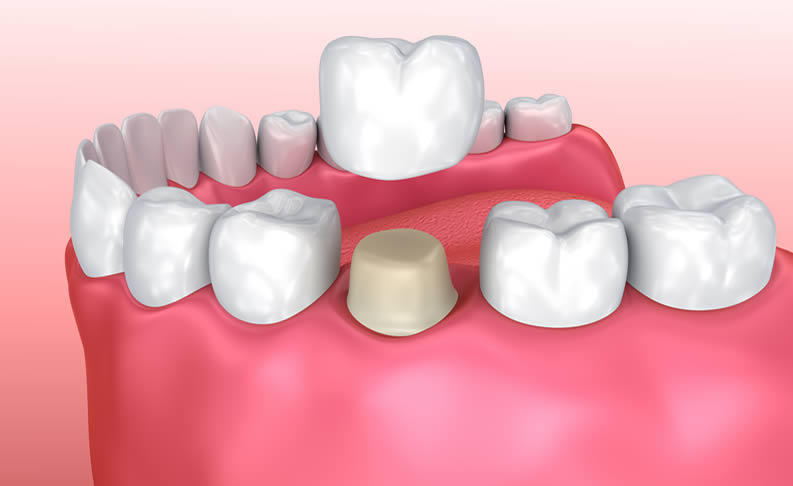
Dental Fillings
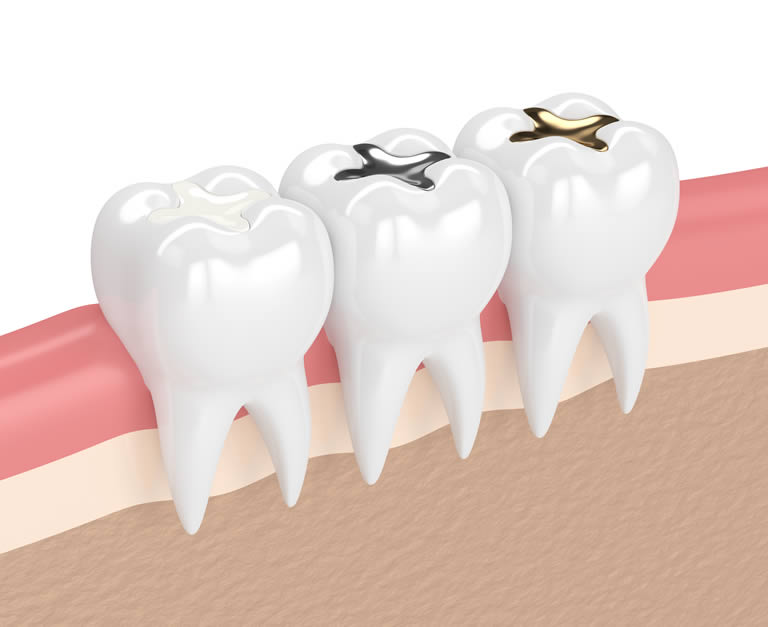
Dentures
A denture consists of natural looking artificial teeth set in a supportive base. It may be fabricated to replace either a small group of teeth, an entire upper arch, an entire lower arch, or used to restore both dental arches.
A complete denture refers to the replacement all of the teeth in a dental arch. It can be inserted either of two ways. It can be inserted some weeks after the extraction sites and all of the surgical procedures have had a chance to heal, or as an “immediate” denture placed the same day the last remaining teeth are extracted. Although an immediate denture offers the advantage of not having to go without teeth for any period of time, it can require multiple adjustments as the tissues remodel and heal following dental extractions or other surgical procedures.
In situations where some sturdy teeth remain, partial dentures can be fabricated. Partial dentures can achieve adequate retention and stability by having clasps on the teeth surrounding the edentulous areas.
In some cases added stability for the dentures can be provided by strategically placed implants.
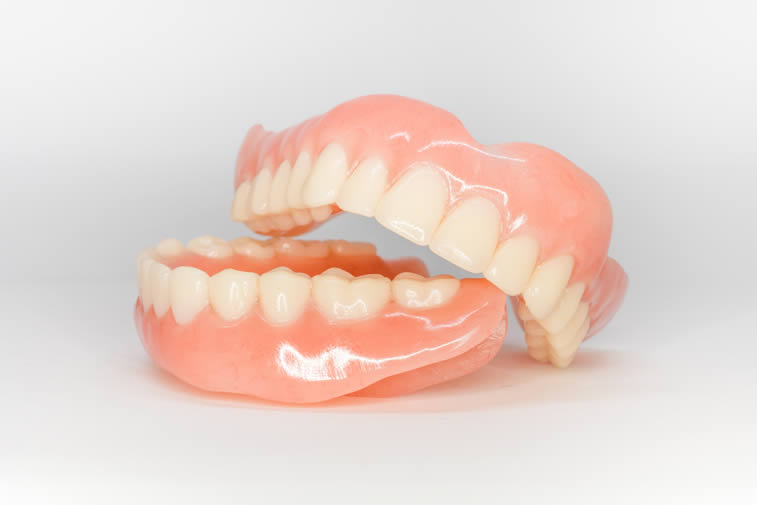
Emergency Treatment
There are many reasons to seek emergency dental care, including severe toothaches, chipped or fractured teeth, a dental abscess, impacted teeth, loose or broken fillings, lost or dislodged crowns, broken dentures and more. While the pain of a toothache is one of the more common reasons that patients come to our dental office for emergency dental care, we also promptly treat emergencies that are not necessarily painful like crowns that have been dislodged and broken dentures that leave embarrassing gaps in one’s smile.
Whether your dental emergency is painful, if it affects the appearance of your smile, or if you suspect that an infection is present, contact our office immediately for care. We will make every effort to see you as promptly as possible.

Extractions
To reduce any anxiety and insure patient comfort whenever a tooth extraction is necessary, the procedure, the post surgical instructions, as well as any restorative follow-up care will be carefully and completely explained.
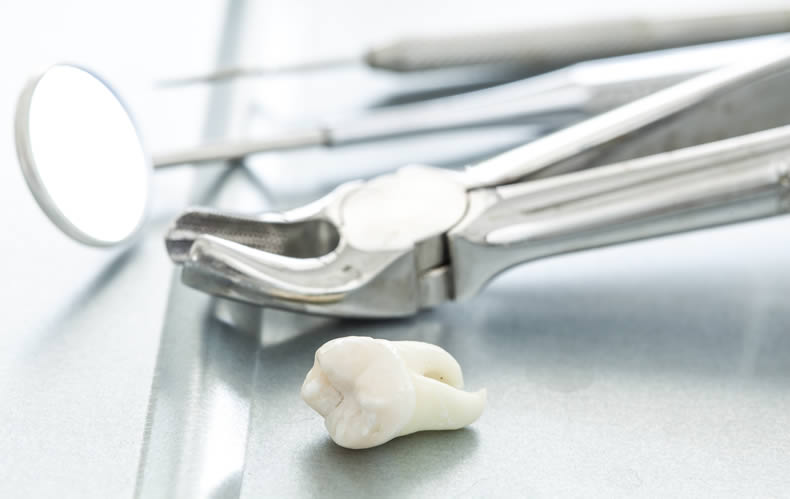
Implant Dentistry
One of the most significant dental innovations in recent times, an implant is a small surgical fixture made of biocompatible metal or ceramic materials that is placed into the jawbone and functions in the same manner as the root of a tooth. In the same way that natural root supports the natural crown of your tooth, an implant once it fully integrates with the surrounding bone, provides a stable and durable foundation for a replacement tooth. Implants often support a crown for an individual tooth, but can also be used as abutment teeth for a dental bridge, or strategically placed to help stabilize a denture.
Out of all of the restorative choices available today an implant comes the closest to replicating the look, feel and function of a natural tooth. Furthermore, it is the only method of tooth replacement that does not require the involvement or preparation of the adjacent teeth. A dental implant also stimulates bone remodeling to prevent shrinkage in areas where teeth are missing and helps to restore facial contours in areas where significant bone loss has occurred.
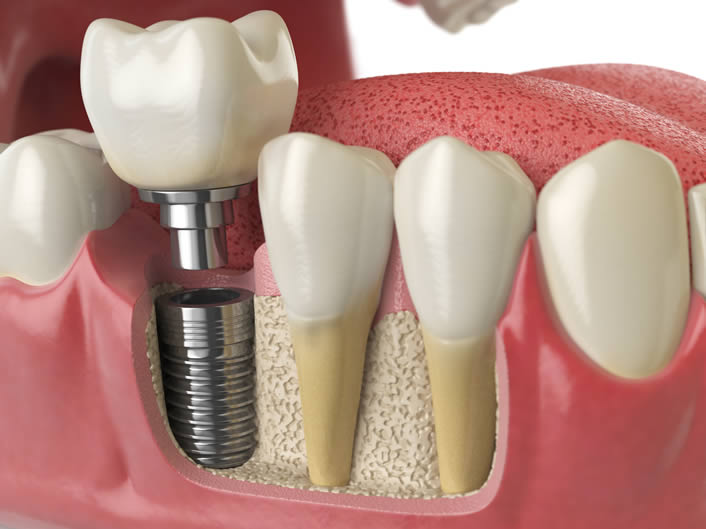
Initial Oral Examination

Pediatric Dental Care
As part of an effort to guard against childhood dental decay we recommend periodic fluoride treatments and dental sealants placed on the biting surfaces of the back teeth.

Periodontal Treatment
The problem with periodontal disease is that often the progression is painless. As a result the affected individual may not be aware of an ongoing disease process. This is why it is so important to recognize the signs of the earliest stage of periodontal disease, which is gingivitis. The symptoms of gingivitis typically include red, swollen and bleeding gums. Treatment instituted at this point is often sufficient to reverse the course of the disease and to avoid any permanent damage to the periodontal tissues. A series of deep dental cleanings, an improved home care regimen, and a commitment to regular maintenance may be all that is required to prevent this stage of periodontal disease from progressing.
Left untreated, gingivitis can escalate into periodontitis. However, there are other factors that can contribute to the escalation of periodontal disease, including smoking, genetic tendencies, and unchecked diabetes. In either case, when periodontal disease has progressed to a more advanced stage there is usually clinical and radiographic evidence of damage to the bone and soft tissues supporting the teeth. Periodontal treatment in this phase is designed to halt the progression of the disease and to restore tooth support as possible. This may involve medications to control the bacteria and reduce the size of the pockets between the teeth and gums, gum surgery, as well as bone and tissue grafts.
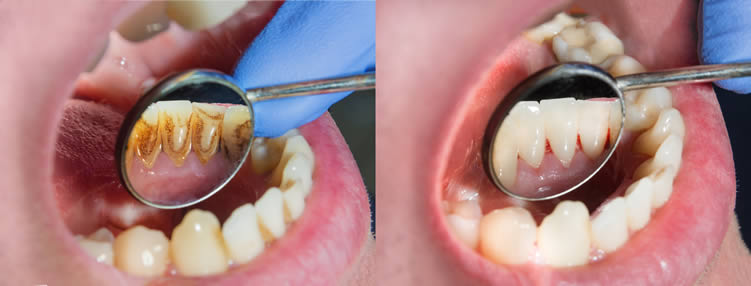
Root Canals
Inside every tooth is either a single central chamber or multiple ones that contain connective tissue, a nerve supply, and blood vessels. These core tissues, known as the dental pulp, help your tooth to grow and mature before it emerges into the mouth. A root canal procedure is required when this dental pulp is irreversibly damaged or has died.
Root canal therapy involves cleaning and shaping each canal, and then filling them with a special inert material. Following this they are sealed to prevent any subsequent infection. Once root canal therapy has been completed, the tooth should be fully restored as recommended.
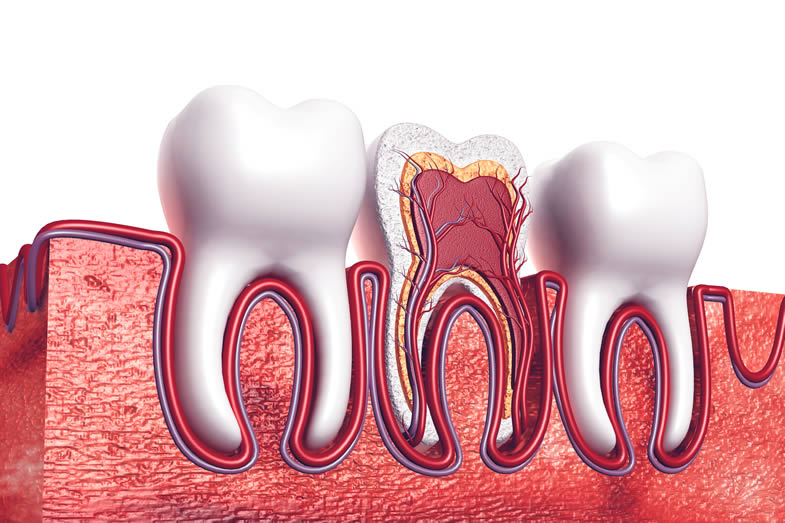
Teeth Whitening
Teeth whitening or bleaching simply refers to any process that will make the teeth appear whiter. While there are many over the counter options for teeth whitening, the most effective and safest teeth whitening systems are the professional strength ones available at the dentist’s office. A dental professional whitening system offers a higher concentration of whitening components and delivers them to the teeth in the most efficient manner to achieve optimal results.
At our office we offer two exceptional options for tooth whitening. You can choose either an in-office tooth whitening procedure or a professional take home system. Both of these are top-of the-line systems. However, the biggest advantage of the in-office procedure is that in as little as one hour you can achieve a smile that is several shades whiter and brighter than the original color of your teeth.
Our professional strength take home system also produces excellent results. However, this is achieved by way of a more gradual process. Our take home kit may be prescribed alone, or after an in-office treatment to perfect or maintain the in-office result.
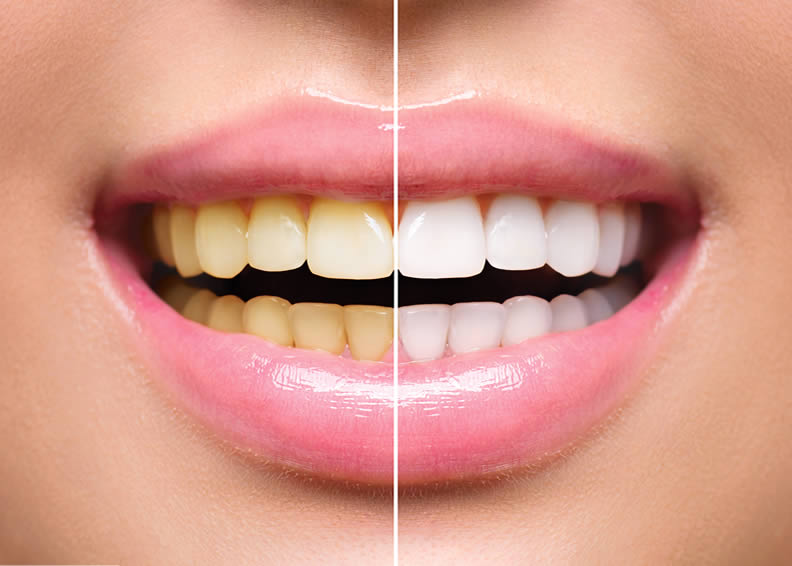
TMJ Treatment
According to the National Institute of Dental and Craniofacial Research (NIDCR), temporomandibular joint disorders (TMJ), also referred to as temporomandibular disorders (TMD), are the most common source of chronic facial pain and jaw dysfunction. It is estimated that more than 10 million people in the United States are affected by temporomandibular joint problems.
What is the Temporomandibular Joint?
There are two temporomandibular joints that connect the left and right sides of the lower jaw to the temporal bone. Both joints and their associated muscles, ligaments and tendons work together to allow for all manner of oral function as the jaw moves up and down, front to back and from side to side. Containing a shock-absorbing, soft disc that sits between the rounded condyles of both sides of the lower jaw and the corresponding concavities in the skull’s temporal bone, the TMJ makes chewing, speaking, yawning and all jaw movements possible.
Since the TMJ is a joint with both up and down hinge-like movements, as well as side to side and front to back sliding motions to perform, it is often considered one of the most complicated joints in the body and one of the most difficult to treat when problems arise.
Types and Symptoms of TMJ Disorders
TMJ disorders can fall into one or more of the following three categories:
- Myofascial pain- Refers to pain in the area of the jaw joint due to various causes of increased muscle tension and spasm
- Internal derangement-Involves displacement of the disc, jaw dislocation or trauma to the condyles of the jaw
- Degenerative joint disease -Arthritis
The risk for developing a TMJ problem is greater in the presence of long-term teeth grinding or bruxism, a jaw injury or various types of arthritis such as rheumatoid arthritis and osteoarthritis. Furthermore, the manifestations of a TMJ disorder can vary from person to person with a wide range of symptoms possible, including earaches, ringing in the ears (tinnitus), headaches, back and neck pain, vertigo, muscle spasms and joint tenderness as well as jaw pain, popping or grating sounds with jaw movement, jaw locking and limited jaw movement. For some people a TMJ disorder can be resolved within a relatively short period of time, while for others it will continue to persist despite extensive therapy.
Diagnosis and Treatment
When evaluating for the presence of a TMJ disorder, the dentist will perform a thorough clinical assessment of joint symptoms and function. Special radiographic imaging and other diagnostic tests will be ordered as needed. The treatment of a TMJ disorder may include oral appliances such as night guards or stabilization splints to alleviate strain on the joints. Other types of therapy may include steroid injections, occlusal adjustments as well as orthodontic or prosthodontic treatment to improve occlusion. In cases of persistent and serious TMJ problems, surgery may be recommended.
Methods of self-care can be helpful in alleviating some of the symptoms of a TMJ disorder. Patients are typically advised to eat soft foods, avoid extreme jaw movement such as wide yawning and gum chewing, to practice stress reduction and relaxation techniques and applying ice packs or moist heat as directed. If recommended, a patient should follow the dentist or therapist’s instruction for gentle stretching exercises. The short-term use of over-the-counter, non-steroidal, anti-inflammatory drugs and pain medications may provide relief. If not the dentist or physician may prescribe stronger pain or anti-inflammatory drugs, muscle relaxants or anti-depressants.

Veneers
Porcelain veneers are thin facings custom-made of the highest quality ceramic materials that are designed to fit perfectly over the front of your teeth. One of the most conservative cosmetic treatments available, veneers can mask a host of dental imperfections to give you the smile that you have always wanted. Porcelain veneers not only enhance and improve the shape of your teeth, they are able to create an overall whiter and brighter smile.
One of the most appealing aspects of the process of fabricating porcelain veneers is that they involve minimal tooth preparation and take just a few visits. Porcelain veneers, once they are fabricated and fitted, are permanently bonded to the underlying teeth. The result is a naturally pleasing smile that is both strong and durable.
